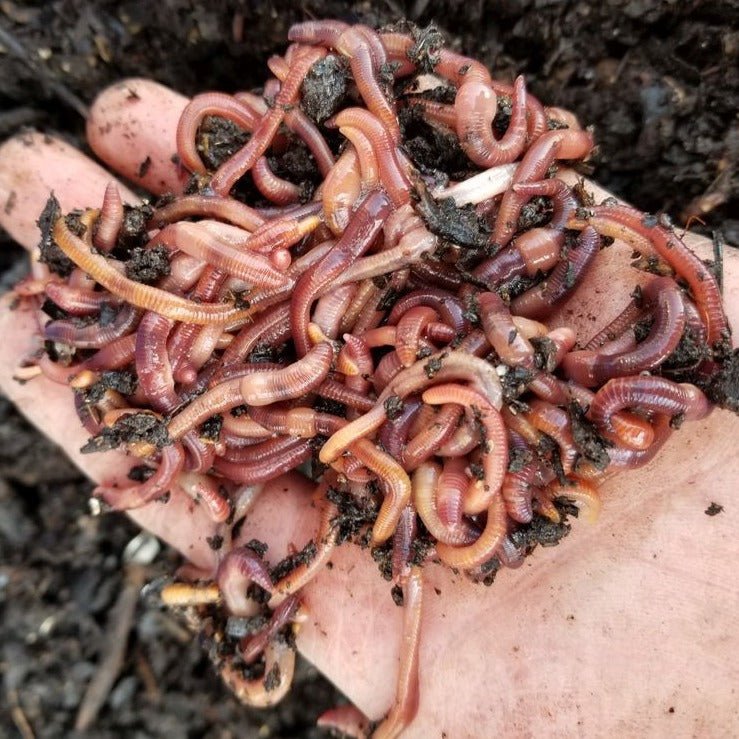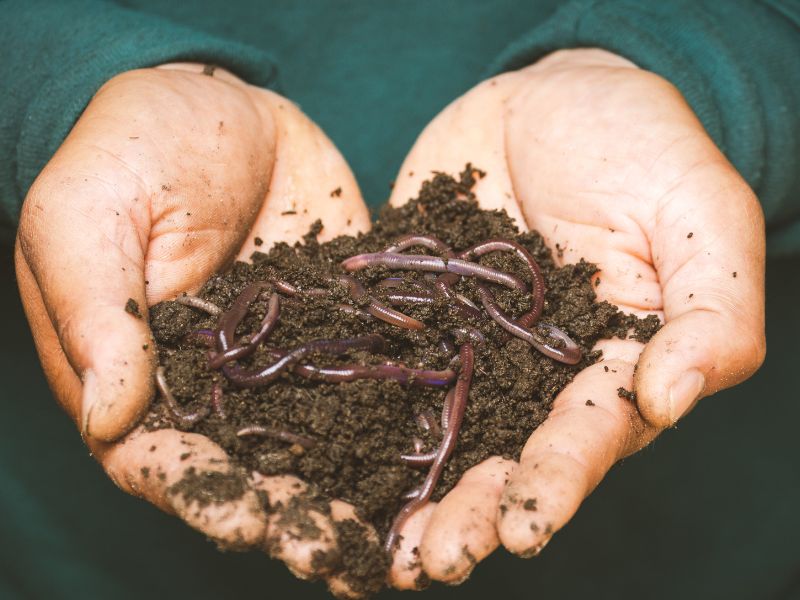Important Overview to Red Wiggler Composting: Tips for a Flourishing Worm Farm
Important Overview to Red Wiggler Composting: Tips for a Flourishing Worm Farm
Blog Article
Using the Power of Red Wiggler Composting: A Comprehensive Take A Look At the Environmental and Agricultural Perks of This Natural Waste Decrease Method
The technique of red wiggler composting represents a compelling junction of environmental stewardship and agricultural innovation, supplying a lasting option to the growing obstacles of waste monitoring and dirt deterioration. With the natural process of vermicomposting, organic waste is transformed into an important source that not just enriches soil yet likewise adds to a substantial decrease in land fill contributions and greenhouse gas discharges. As we discover the multifaceted advantages of this method, we discover how it can reshape agricultural practices and promote eco-friendly recognition, prompting a more detailed examination of its possible influence on our areas and ecosystems.
What Are Red Wiggler Worms?
Red wiggler worms, medically referred to as Eisenia fetida, are a types of earthworm particularly adapted for composting and natural waste malfunction. These worms flourish in the nutrient-rich atmosphere of decomposing raw material, making them perfect for vermicomposting systems. Growing to a size of roughly 3 to 4 inches, red wigglers are characterized by their reddish-brown pigmentation and distinct banding patterns along their bodies.
Unlike other earthworm varieties, red wigglers choose to live in the upper layers of dirt and natural particles, where oxygen degrees are greater and food resources are abundant. Their physiological adaptations permit them to process organic products successfully; they possess a well-developed digestive system that enables them to transform waste into nutrient-rich castings, usually described as "black gold" in gardening and agricultural contexts.
Eisenia fetida plays an important function in the environment by helping with the disintegration process, improving dirt structure, and promoting microbial activity. Given their one-of-a-kind characteristics and ecological value, red wiggler worms have actually become a main element in sustainable waste management methods and organic gardening initiatives, contributing substantially to ecological wellness.
Benefits for Dirt Wellness
The addition of red wiggler worms in composting systems provides substantial advantages for soil wellness. These worms play an important function in the decomposition process, damaging down natural matter into nutrient-rich vermicompost. This natural fertilizer improves dirt structure, water, and aeration retention, adding to a more favorable environment for plant growth.
Vermicompost is rich in important nutrients such as nitrogen, phosphorus, and potassium, which are vital for plant development (Red Wiggler Composting). The presence of beneficial microorganisms in vermicompost further promotes dirt wellness by enhancing nutrition availability and suppressing soil-borne virus. This vibrant interaction fosters a durable dirt environment that supports sustainable farming methods
Furthermore, red wigglers facilitate the development of humus, a steady organic issue that improves soil fertility and resilience. This raised natural content not just enhances soil appearance yet additionally improves its ability to withdraw carbon, reducing environment adjustment influences.
Integrating red wiggler composting right into agricultural systems can, consequently, bring about healthier dirts, greater crop returns, and enhanced sustainability. Because of this, embracing this natural waste reduction technique can produce extensive advantages for both the atmosphere and agricultural productivity.
Influence On Waste Decrease
Incorporating red wiggler worms into composting systems substantially minimizes waste, transforming natural materials that would otherwise add to land fills into valuable garden compost. This approach, called vermicomposting, successfully processes cooking area scraps, yard waste, and other eco-friendly materials, causing a substantial decrease in the volume of waste sent out to landfills. According to the Epa, organic waste comprises a significant section of garbage dump materials, creating dangerous greenhouse gases as it breaks down anaerobically.
By utilizing red wigglers, a very efficient composting representative, services and houses can draw away a considerable amount of natural waste from these land fills. Each extra pound of red wigglers can refine and eat about half an extra pound of organic waste daily, bring about an exceptional reduction in general waste generation.
Furthermore, the application of vermicomposting supports neighborhood waste management efforts and promotes a round economy, in which waste is transformed into a resource. As neighborhoods increasingly embrace this technique, the advancing result on waste reduction becomes evident, fostering a more sustainable atmosphere and motivating responsible waste monitoring practices. Welcoming red wiggler composting not only alleviates waste concerns but likewise boosts neighborhood recognition regarding sustainable living.
Enhancing Agricultural Practices
Making use of red wiggler worms in agricultural techniques can substantially boost dirt wellness and plant productivity. These worms play an essential function in the composting procedure, damaging down raw material right into nutrient-rich vermicompost. This natural fertilizer improves dirt structure, aeration, and water retention, which are crucial for robust plant development.
Additionally, the castings created by red wigglers are rich in vital nutrients, such check my blog as nitrogen, potassium, and phosphorus, promoting healthier plants with greater returns. The microbial task stimulated by these worms likewise adds to a thriving soil ecological community, raising biodiversity and durability versus conditions and parasites.

In addition, making use of vermicompost can improve soil pH degrees, making nutrients extra available to plants. Red Wiggler Composting. Therefore, farmers can cultivate healthier crops while all at once adding to dirt conservation efforts, inevitably creating a more lasting agricultural future
Beginning With Composting
The primary component in red wiggler composting is natural waste, which can include cooking area scraps, backyard hop over to here waste, and paper items. This balance promotes an optimal setting for red wigglers, which are the crucial organisms in this composting method.
Picking an ideal composting system is similarly essential. Worm containers can be developed for indoor or exterior usage, and they need to supply sufficient water drainage and oygenation. It is suggested to begin with a little number of worms-- about one extra pound of red wigglers for every one pound of waste generated once a week.

Conclusion

The practice of red wiggler composting stands for a compelling intersection of ecological stewardship and agricultural development, offering a lasting service to the expanding difficulties of waste management and soil degradation.In addition, the application of vermicomposting supports local waste monitoring efforts and advertises a circular Full Article economic situation, where waste is transformed right into a resource. As neighborhoods progressively embrace this practice, the collective effect on waste decrease becomes noticeable, promoting an extra sustainable setting and encouraging liable waste management methods. The primary component in red wiggler composting is natural waste, which can include cooking area scraps, lawn waste, and paper items.In summary, red wiggler composting offers a sustainable option for natural waste management, producing nutrient-rich vermicompost that significantly improves dirt health.
Report this page